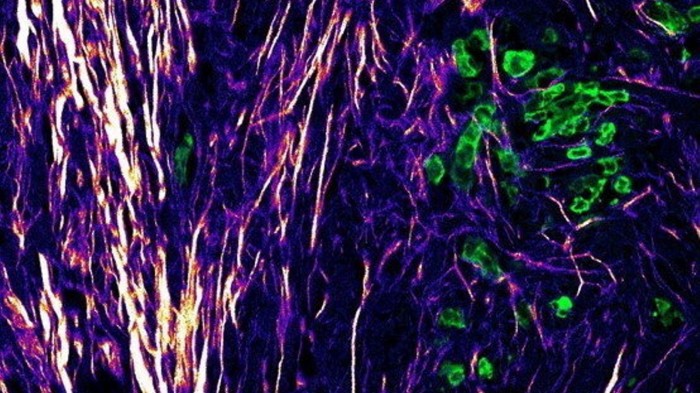Unlock the Editor’s Digest for free
Roula Khalaf, Editor of the FT, selects her favourite stories in this weekly newsletter.
Scientists have discovered a way to predict which cancers are most likely to spread around the body, widening a path to potential new treatments to halt the most aggressive forms of the disease.
Researchers found some malignant cells changed shape in response to biological structures around them, making it easier for them to break out to seed fresh tumours elsewhere.
The work highlights a growing focus on the chemical targeting of surrounding tissues as part of efforts to stop cancerous cells expanding to other organs. This process of spread, known as metastasis, is a feature of many cancer deaths because it makes the disease much harder to treat.
“Our research has uncovered the road map that cancer cells follow to break out of a tumour, enabling it to cause a secondary tumour elsewhere in the body,” said Victoria Sanz-Moreno, professor of cancer cell and metastasis biology at the Institute of Cancer Research in London, who led the study.
“Now that we understand this road map, we can look to target different aspects of it, to stop aggressive cancers from spreading.”
The study, published in Nature Communications on Friday, is the product of almost 10 years’ work on how cancer cells interact with surrounding biological support structures known as the extracellular matrix. This physical framework for cells, which the researchers describe as a kind of a biological “scaffolding”, influences how tumours develop.
The scientists, including experts from Barts Cancer Institute at Queen Mary University of London, examined tumour tissue from 99 patients suffering from melanoma skin cancer and breast cancer.

They saw that extracellular matrix fibres at the outer edges of tumours pointed away from the malignancy, providing a “track” for the cancer to follow to spread. In addition, the tumour cells in that region were rounded in shape — a common feature of highly invasive cancers.
Cancer cells at the tumour border had more genetic traits linked to their abilities to survive and spread, the researchers found. Cancer patients with a higher presence of these kinds of genes died sooner than peers whose genes did not show these characteristics, they said.
Cancer is one of the biggest killers worldwide, affecting about one in five people during their lifetimes, according to the World Health Organization. It accounted for 20mn new cases and nearly 10mn deaths in 2022, the WHO says.
The research may intensify interest in the development of treatments targeting. lysyl oxidase enzymes, which play a role in binding the extracellular matrix together. One such drug is being investigated as a means to target pancreatic cancer.
Understanding how cancer spreads is “crucial to finding treatments which can stop the disease advancing”, said Iain Foulkes, executive director of research and innovation at Cancer Research UK, a co-funder of the study.
“This research shows how much cancer relies on the scaffolding around it to move and spread elsewhere,” Foulkes said. “Cutting down this scaffolding could deprive cancer of opportunities to spread and improve the chances of successful treatment, and I look forward to further research which hopes to achieve this aim.”
Source link









